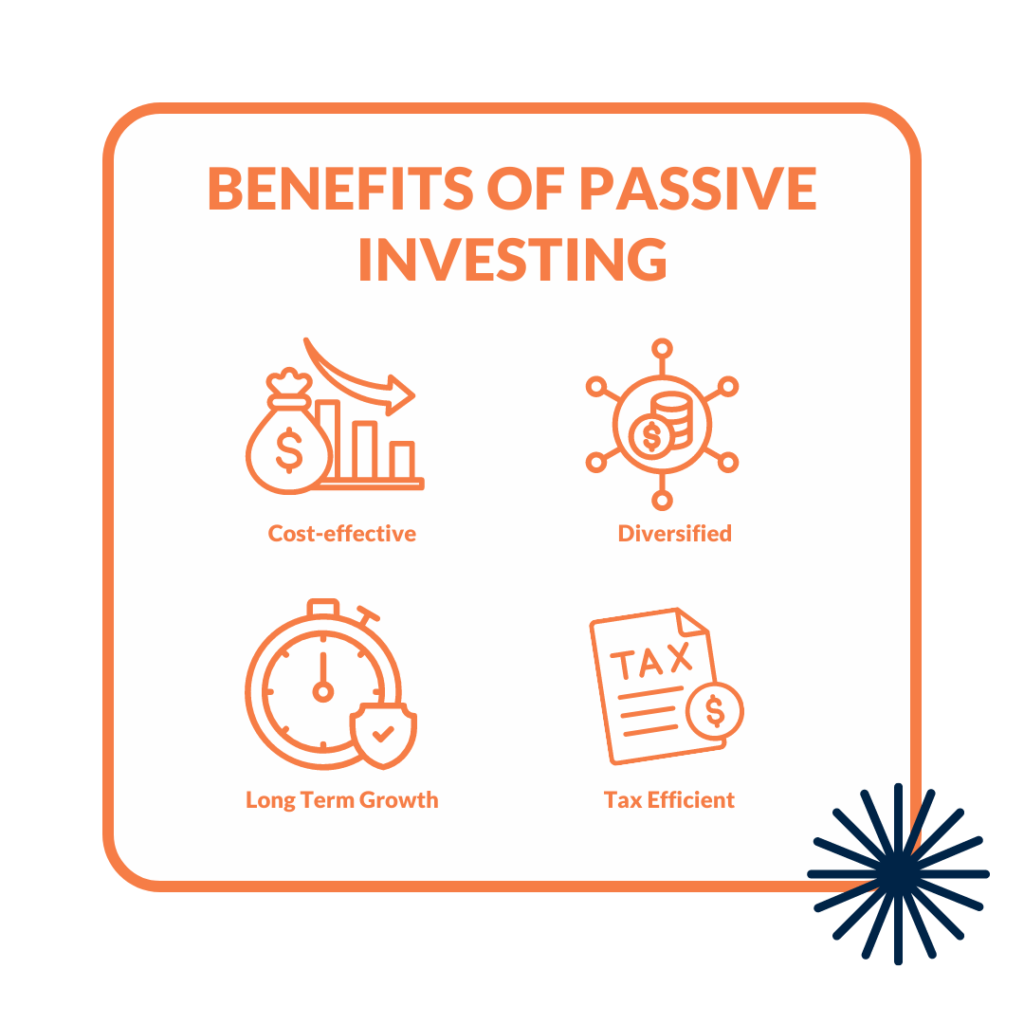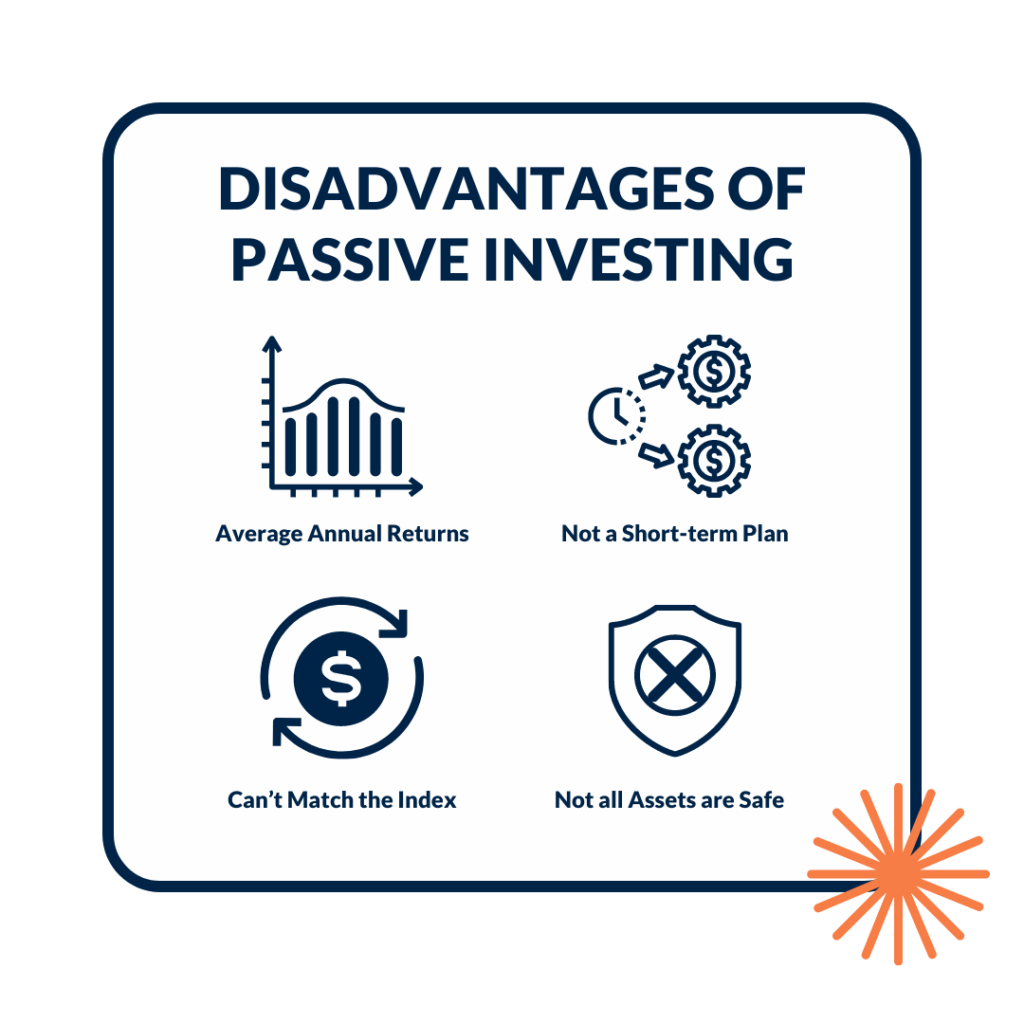
Passive Investing: What It Is and How to Get Started
“Make money while sleeping.”
The thought may have entered your mind at some point. And if you dwelled on it a bit more, you’d have come to realise that investing in a rental property or setting up a business takes a lot of time and effort – and that’s the opposite of making money while you sleep.
Earning income while you sleep is simply another way of saying passive income. It refers to income that comes in regularly with little to no maintenance necessary.
Earning a passive income is not impossible, and it is also quite doable with passive investing. Some would even say that passive investing in Australia is one possible strategy to reach your financial goals.
What is passive investing?
Passive investing is a method of maximising returns by minimising purchasing and selling activities. Passive investment strategies attempt to avoid the expenses and poor performance that might result from frequent trading and attempting to time the market. Its purpose is to steadily accumulate wealth over the long term.
The primary assumption of a passive investment strategy is that the market delivers positive returns in the long term. Also sometimes referred to as a buy-and-hold strategy, passive investing entails purchasing shares and securities with the intention of holding them for long-term gains. Passive investors are not interested in short-term price fluctuations or market timing.
Active Investing vs. Passive Investing
Active and passive investment funds are the two basic categories of investment funds. While both choices have a place in an investment portfolio, it’s critical to understand how they work before committing funds to them.
Active investing entails fund management selecting the assets in the fund based on the investment manager’s market view and the type of actively managed funds handled.
Numerous types of actively managed funds provide exposure to various asset classes and industries. Rather than tracking an index, actively managed funds seek to outperform a specific benchmark.
As an example, an actively managed fund would aim to attain the same return as the S&P ASX 200 plus 2% per year. Another frequent technique to assess an active fund’s performance is to set a premium above the rate of inflation. A fund, for example, could seek to outperform inflation by 2% every year.
Active investors conduct extensive research and monitor companies closely, stock picking or buying and selling shares depending on their forecasts for the future. This is a common strategy for active fund managers or active investors who have a lot of time to spend studying and trading.
Unlike active investors, passive investors tend to have less time to spend studying and trading.
Passive investors buy a portfolio of shares on a regular basis, regardless of how the market performs. This strategy necessitates a long-term attitude that ignores the market’s daily fluctuations.
Whether you see yourself as an active investor or a passive investor, you can invest in a managed fund or an exchange-traded fund (ETF), as both can take an active or passive strategy.
There are actively managed funds and actively managed ETFs with active strategies implemented daily by active managers to cater to the needs of their clients. However, all the daily activities add up to higher fees.
Likewise, there are passive funds and passive ETFs. They have a passive strategy that tracks an index and passive managers are locked with the shares that the index they track holds, regardless of market performance.
Pros of Passive Investing
Index funds cost less than actively managed funds, allow you to invest overseas, and can achieve higher returns. They also offer ease of trade and diversify your portfolio. Index funds are also tax efficient, as they don’t sell very often and rarely have a capital gains event.
Cost-effective
Index funds are less expensive compared to actively managed funds because index fund managers only follow an underlying index, which involves less effort and fewer trades than actively attempting to outperform a benchmark index. As a result, you’ll find that passive funds have lower fees. In contrast, managed funds have higher fees that can easily diminish any gains earned by the fund manager.
Diversified
Passive investments, such as index funds, are less expensive and more accessible, providing exposure to a diverse investment portfolio that would be difficult and costly to establish on one’s own. They also provide convenient access to both domestic and international investments, allowing investors to diversify their portfolios across different asset classes, sectors and firms.
Long Term Growth
Passive investments offer an uncomplicated, clear and economical approach to creating wealth over a long period of time, which is accessible to regular individuals. Historical data shows that investing in the S&P/ASX 200 Index – the main barometer for Australian shares – yielded an average total return of 9.3% annually over the last decade.
Stock market indices have often outperformed the typical returns achieved by investment managers over many years. When combined with lower charges, these funds can be a sensible investment choice.
Tax Efficient
By holding on to your passive investments and allowing them to appreciate in value over time will reduce the amount of capital gains tax you owe the government.
Even if an active investor outperforms the market, they must pay taxes on every single sale they make to get there. Your tax obligation could be large enough to cancel out any gains.
Cons of passive investing
Index funds can deliver profitable returns when an index does well, but when an index drops, so does your investment. They are not a short-term plan, and not all assets are safe. Some passive funds follow volatile global markets, while others bundle in riskier investment assets. Always do your homework before investing.
Average Annual Returns
Although index funds can offer a significant level of diversification, they typically generate average yearly returns. Index funds may lower the potential for significant profits since they are determined by the collective outcomes of a large basket of assets.
Not a Short-term Plan
Passive funds, such as index funds, are designed to perform best over many years, but they are not ideal for investors seeking sizable short-term gains. If you invest in an index fund and need the money after only six months, there is a good chance you’ll have less than you started with because index funds have limited potential to capture big short-term gains.
While this is a feature of index funds, not a flaw, investors seeking sizable short-term gains should look elsewhere.
Can’t Match the Index
Although passive investments are typically less expensive than active investments, a real or virtual investment manager must still be paid to perform the transaction. Every time shares in a fund are bought and sold, these fees are paid. It reduces investment performance, particularly if shares are regularly bought in small amounts.
Not all Assets are Safe
As with any investment, index funds come with risks. When an index drops, so does your investment. Additionally, there is a currency risk if the index fund invests in international assets, which can impact returns. While many index funds follow major indices, such as the ASX 200, some track volatile markets like oil or bundle in riskier assets.
To make informed investment decisions, it’s crucial always to do your homework and carefully evaluate any investment’s risks and potential returns. Since no investment is ever 100% safe, it is important to seek professional advice before making any investment decision.
How can you invest passively?
Passive investing works best when it lives up to its name. Investing in a basket of companies that mirrors the broader performance of the stock market is the best way to save time and money. These are referred to as index funds. You can purchase them on the ASX through an exchange-traded fund (ETF).
Passive ETF investing has exploded in Australia in recent years. People in Australia are shifting their investments to passive ETFs as they learn about the benefits of passive investing. Since the introduction of ETFs in the 1990s, Australians have invested over AUD$136.9 billion in ETFs by 2021. On the ASX, there are over 250 ETFs listed.
And although its buy-and-hold strategy is simple enough, you may need help to sift through over 200 ETFs listed in the ASX. Having a financial adviser help you pick the right ETFs or passive investments with a matching investment strategy that meets your financial goals may be a great idea.
While investing can seem complicated and time-consuming, it doesn’t have to be that way with knowledge and expert guidance. Whether you’re young or old, it’s never too late to start investing for your future.
While investing can seem complicated and time-consuming, it doesn’t have to be that way with knowledge and expert guidance. Whether you’re young or old, it’s never too late to start investing for your future.
Need investment advice?
Central Coast Financial Planning Group is to help you tailor your investment plan and build your portfolio. Our financial advice team can help you establish direction for your investments to achieve your financial and lifestyle goals.
Call us or book online to secure your initial consultation today!
REFERENCES:
- https://www.spglobal.com/spdji/en/indices/equity/sp-asx-200/#overview
- https://www2.asx.com.au/blog/investor-update/2021/evolution-of-income-investing-on-asx
- https://www.ft.com/content/05ea8dda-33e0-45fb-94f1-3e0d871f1de2
- https://www.marketindex.com.au/asx-etfs
DISCLAIMER: The views expressed in this publication are solely those of the author; they are not reflective or indicative of RI Advice Group’s position and are not to be attributed to RI Advice Group. They cannot be reproduced in any form without the express written consent of the author. This information (including taxation) is general in nature and does not consider your individual circumstances or needs. Do not act until you seek professional advice. Newcastle Financial Planning Group, Central Coast Financial Planning Group, Sydney Wealth Advisers, Coastal Advice Port Macquarie and Coastal Advice Ballina Byron are subsidiaries of Coastal Advice Group Pty Ltd which is a Corporate Authorised Representative of RI Advice Group Pty Ltd, ABN 23 001 774 125 AFSL 238429.







